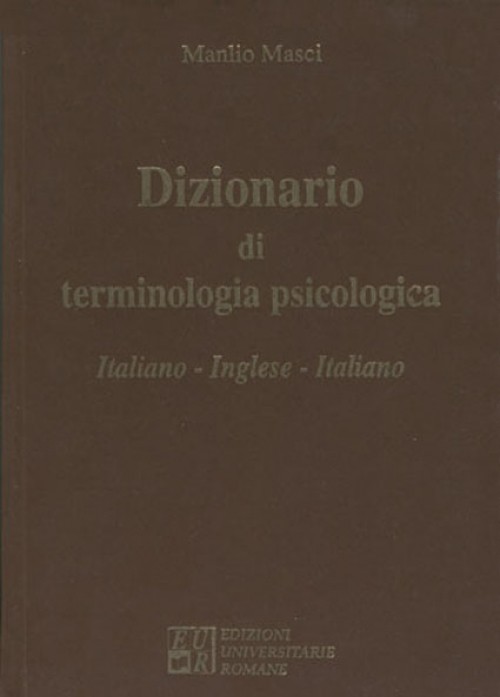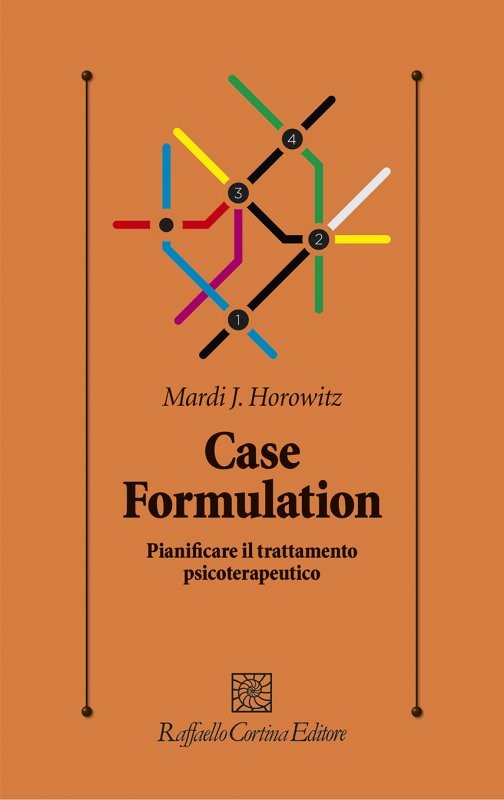Price: £18.99
Si può acquistare direttamente dalla Karnac Books
al prezzo di £18.04
Synopsis
This book, written in plain language by an experienced, psychoanalytically-orientated therapist, is aimed at lay readers who wish to understand how couples consciously and unconsciously operate in successful and unsuccessful partnerships. It covers the central concepts involved, illustrated by (disguised) case material. The book will also be invaluable for trainers, trainees, and individual counsellors/psychotherapists wishing to extend their work into a fresh clinical area namely couple therapy. The style is lively and accessible, covering a complete range of couple issues from early union till death.
Description
By means of real people's stories it clearly demonstrates how internal and external experiences throughout development from birth to adolescence shape the style, quality, and progress of a committed pair bond. Not all couples require therapy, of course. A careful reading of this book could be sufficient to start off a change in a couple's way of thinking, such that impending problems are prevented or better managed. A summary of who might and might not need help is presented in the concluding section of the book. The author provides no easy solutions to conflict or impending break-up, but she does offer a clear model for understanding the complexity and depth of couple disharmony. Such insight may create opportunities for change.
'I salute Wyn Bramley for having written a book which manages to be both serious and playful, jargon-free yet psychoanalytically rich, as well as refreshingly accessible but still informative for seasoned practitioners. "Bewitched, Bothered and Bewildered: How Couples Really Work" embraces the best of classical psychodynamic thinking about marriage, and presents it in a highly resonant manner, infused with instantly recognisable examples from literature and from daily life. I recommend this book as essential reading for anyone who is married, or has been married, or may wish to marry.'
- Brett Kahr, Chair, Society of Couple Psychoanalytic Psychotherapists and Visiting Clinician, Tavistock Centre for Couple Relationships at the Tavistock Institute of Medical Psychology, London.
Author of "Sex and the Psyche".
Despite increasing affluence, educational and employment prospects, social mobility and so forth, Government and Opposition political parties remain deeply concerned with the Family as the basic social unit. Tax breaks, better housing and moral exhortation are not enough, it seems, to persuade couples to remain together. Worry persists, over the human, as well as the social and health costs of family breakdown, to the nation and to future generations. This book is not a sociological treatise or a political tract. But it goes a long way to address the reasons why people part, and by what means many may be enabled to remain together. The author, a couple therapist with 30 years experience, aims to converse with (as opposed to talk down to) the reader, about how couple difficulties arise and why these difficulties are frequently maintained - often unconsciously - by pairs of otherwise loving and reasonable adults.
Our earliest couple relationship is forced upon us out of our first separation from our mother's body. What was one is now two. How this couple's relationship then develops, including the way in which father (or a father figure) is admitted into the twosome, will profoundly affect adult partner choice later on. The book clearly demonstrates by means of real people's stories, how internal and external experiences throughout development from birth to adolescence, affect the style, quality and progress of a committed pair bond. Partners may carry many deep (but not necessarily abnormal) needs and emotional wounds, of which they are scarcely (if at all) aware. Both sets of past experience come into play, often dangerous play, when two people live in intimate proximity. It is vital these antecedents are lovingly understood rather than used as weapons, and that difference in personalities are respected and accepted as much as the comforting similarities.
Illustrative material from therapy sessions admits the reader to the pain and joy occurring in every stage of coupledom, from the selection - conscious and unconscious - of one's other half, to the agony and ecstasy of the early years, right through to old age and the facing of a partner's death. The pair bond itself (a third party in the couple's relationship) inevitably evolves through stages, redolent of childhood's "milestones". Some milestones in our childhood are easily achieved while others may never be reached, but we learn satisfactory defence mechanisms to cover up any insufficiencies. Yet each partner, no matter how apparently well adjusted, will at different times find old personal struggles reawakened by the vicissitudes of intimate cohabitation. Many imagine a shared life to be a refuge or cure for emotional pain. In fact mature loving is hard work, but when achieved, perhaps years later, the rewards are great and lasting. In this book, we meet people of all ages in enormous distress, on the edge of splitting up, enduring illness, affairs, drink problems, children or in-law issues, redundancy or competing life styles; or suffering unutterable loneliness within the relationship, unable to understand the loss of former closeness. Making sense of what has been, and is, happening beneath the surface, often needs a third party to unravel unspoken issues which have previously been oblivious to the couple.
Therapeutic intervention is not always a success (and the author explains why), but many couples do come through to a better and truer understanding of their own and their partner's make-up, resulting in a more authentic and realistic way of dealing with their shared concerns.
Not all couples require therapy, of course. A careful reading of this book could be sufficient to start off a change in a couple's way of thinking, such that impending problems are prevented or better managed. The attitudes and psychological capacities required by those who do approach a couple therapist, as well as a summary of who might and might not need help, are addressed in the concluding section of the book.
Wyn Bramley provides no simple solutions to disharmony or impending break-up, but she does offer a clear model for understanding how couple partnerships operate, thus creating opportunities for change. Without blame or judgement, she sets out to help you discover the truth of why you and your partner are really together at all, and what unacknowledged forces keep you together, or threaten to tear you apart.
The Author
Wyn Bramley was Senior Psychiatric Sister at the Cassel Hospital (one of the first psychoanalytically oriented "therapeutic communities" in the UK). She then moved into Student Counselling. Over a fifteen year period, she set up and headed the counselling service at what is now the University of Westminster, before transferring to a similar role at University College, London. During this period she qualified (1976) at the Institute of Group Analysis and Family and Marital Therapy (now Institute of Group Analysis), whilst setting up in-service training programmes with colleagues, for what was to become the national Association for Student Counselling. In 1986 she moved to Oxford, working as a trainer and clinician in both the private and NHS sectors. In the mid 1990's she set up and then directed the Master's Programme in Psychodynamic Studies at Oxford University. In 1996 she published two books expounding her non doctrinaire view of psychodynamic therapy. Pertinent to "Bewitched Bothered and Bewildered: How Couples Really Work" is her book "The Broad Spectrum Psychotherapist" published by Free Association Books. Currently, she runs a small private practise in rural Oxfordshire.
Novità editoriali
Bewitched, Bothered and Bewildered. How Couples Really Work
Bramley Wyn
Family, Couple and Systemic Therapy
Karnac Books
Edizione 2008
Pagine 270
Prezzo 0.00


